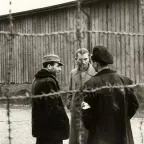Chemical and biological weapons
The international community banned the use of chemical and biological weapons after World War I and reinforced the ban in 1972 and 1993 by prohibiting the development, production, stockpiling and …
The international community banned the use of chemical and biological weapons after World War I and reinforced the ban in 1972 and 1993 by prohibiting the development, production, stockpiling and …
Document suggesting model legislative provisions to be used by States as guidance in the drafting of legislation prohibiting the recruitment or use of children in armed conflict. t h e D o m e s t i …
All over the world, conflict and violence deprive people of water. Today is World Water Day, and as the ICRC Water and Habitat Unit celebrates its 30th anniversary, we highlight their role in …
Female detainees are often the sole providers for their families, so their detention results in great economic hardship for their loved ones. An innovative income generating project run by the ICRC …

The five founders of the ICRC: Gustave Moynier (top left), Louis Appia (bottom left), Guillaume-Henri Dufour (centre), Henry Dunant (top right), and Théodore Maunoir (bottom right). The ICRC was …

The International Committee of the Red Cross (ICRC) believes that the use of toxic chemicals as weapons for law enforcement purposes should be limited exclusively to riot control agents, which have …

In the run-up to the Chemical Weapons Convention review conference, the ICRC is urging that the use of toxic chemicals for law enforcement be limited to riot control agents – also known as ‘tear gas’ …

In contemporary armed conflicts civilians are the primary victims of violations of IHL committed by both State and non-State parties. The nature of contemporary armed conflicts continues to provide …
Try one of the following resources:
Created in 1863, the ICRC library, alongside the ICRC archives, provides an indispensable documentary reference on the organization itself and international humanitarian law.
International humanitarian law is based on a number of treaties, in particular the Geneva Conventions of 1949 and their Additional Protocols, and a series of other instruments.
Customary international humanitarian law consists of rules that come from "a general practice accepted as law" and that exist independent of treaty law.